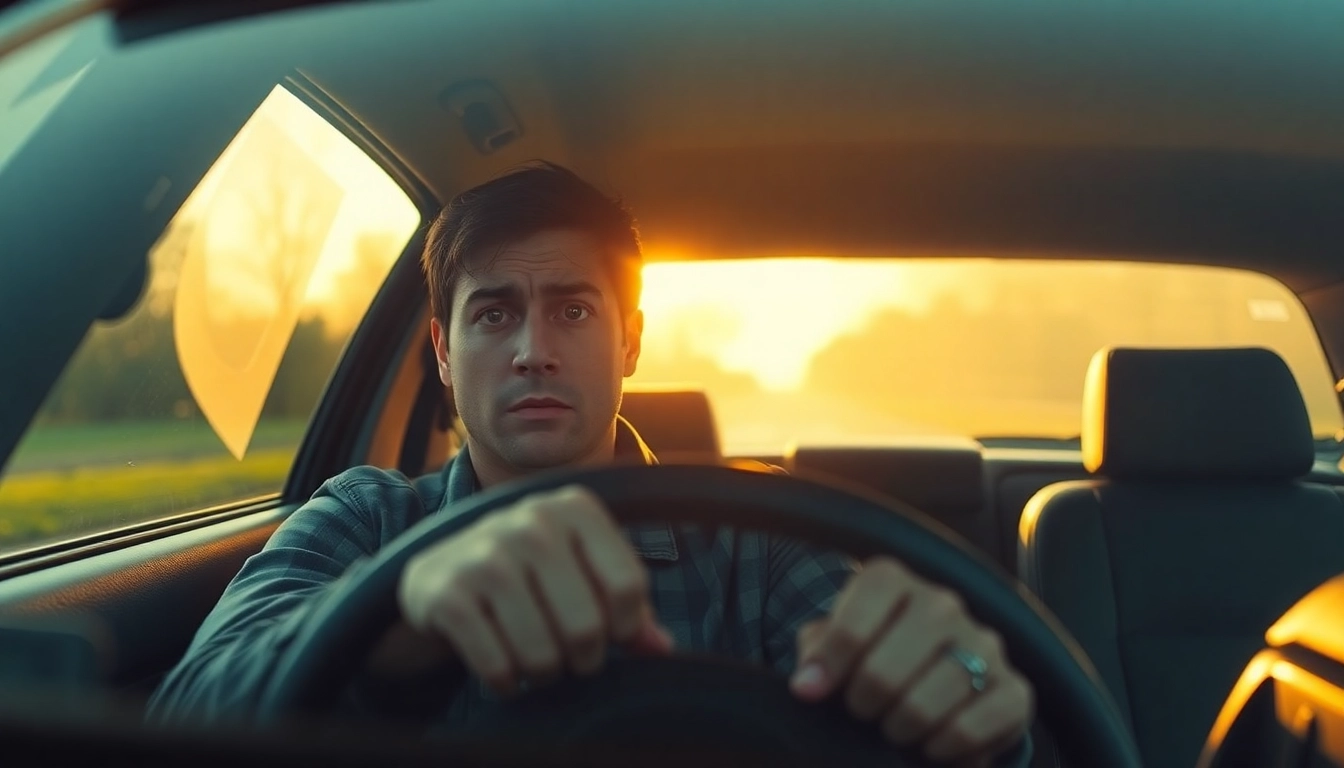Understanding the Fear of Driving
The fear of driving, often referred to as driving anxiety, is a common issue that affects many individuals around the globe. It can manifest in various forms, from mild unease to debilitating panic attacks. Understanding this fear is crucial for anyone looking to overcome it. People may find themselves overwhelmed by the idea of driving for numerous reasons, including past accidents or even the fear of being in control in potentially dangerous situations. This anxiety can lead to significant challenges in daily life, limiting mobility and independence. If you or someone you know struggles with fear of driving, the insights below will explore its triggers, symptoms, and overall impact.
What Triggers the Fear of Driving?
Driving anxiety can stem from various triggers, often unique to the individual. Common triggers include:
- Past Traumatic Experiences: Individuals who have been involved in traffic accidents may develop an aversion to driving, associating the act with peril.
- Fear of Losing Control: The notion of being in control of a moving vehicle, especially in heavy traffic or adverse weather conditions, can be daunting.
- Fear of Accidents: The constant worry about the possibility of accidents, whether real or imagined, can lead to heightened anxiety.
- Unfamiliar Environments: Driving in unfamiliar locations can trigger panic, bringing forth feelings of vulnerability.
- Pressure to Perform: The societal expectation to drive proficiently can create anxiety, especially for new or inexperienced drivers.
Common Symptoms of Driving Anxiety
The symptoms of driving anxiety can range from physical to psychological. Recognizing these symptoms is the first step toward managing them:
- Physical Symptoms: These may include sweating, increased heart rate, trembling, and difficulty breathing.
- Emotional Symptoms: Many people experience feelings of dread, irritability, or an overwhelming desire to avoid driving altogether.
- Cognitive Symptoms: Racing thoughts, difficulty concentrating, and a constant focus on worst-case scenarios can plague anxious drivers.
- Behavioral Symptoms: Avoidance of driving, making excuses not to drive, or relying on others for transportation can become common.
The Impact of Fear on Your Life
Living with a fear of driving can severely impact one’s quality of life. It can lead to:
- Limited Independence: Fearful drivers often find themselves reliant on others for basic transportation needs.
- Social Isolation: Avoidance of social events that require driving can lead to a sense of isolation.
- Job Limitations: Many jobs require driving; thus, anxiety may hinder professional opportunities.
- Reduced Quality of Life: Ultimately, the anxiety can rob individuals of the freedom to travel, explore, and enjoy life fully.
Identifying Your Driving Fears
Recognizing and identifying the nature of your driving fears is a crucial step in overcoming them. It helps you understand what you are up against and allows you to tackle the problem effectively.
Types of Driving Anxieties Explained
Driving anxieties can be categorized into several types, each with its specific characteristics:
- Avoidant Anxiety: This is when an individual goes out of their way to avoid driving altogether, resulting in an increasing sense of dependency on others.
- Generalized Anxiety: Involves a pervasive sense of fear related to driving regardless of circumstances, leading to avoidance of all driving situations.
- Specific Situational Anxiety: This occurs when anxiety is triggered only under certain conditions, such as driving alone, during rush hour, or in bad weather.
- Performance Anxiety: Drivers may feel panicky about their ability to drive well, particularly when others are present, leading to self-doubt.
Self-Assessment: Are You Experiencing Fear of Driving?
To assess your driving fear, consider the following questions:
- Do you often avoid situations that require you to drive?
- Have you experienced panic attacks when driving or even thinking about driving?
- Are you preoccupied with thoughts about accidents or other driving-related issues?
- Do you feel an overwhelming sense of dread before or during a drive?
If you answered ‘yes’ to several of these questions, it may be time to seek support and develop strategies to tackle your driving anxiety.
Seeking Professional Help: When to Consult an Expert
Sometimes, overcoming driving anxiety may require professional intervention. It is advisable to consult an expert if:
- Your anxiety significantly impacts your daily functioning or quality of life.
- You experience intense panic attacks or episodes of debilitating fear related to driving.
- Self-help strategies have not led to significant improvement.
- You feel you need additional tools and resources to manage your anxiety.
Therapists or counselors specializing in anxiety treatment can provide tailored strategies and interventions to help you regain control over your driving experiences.
Strategies to Manage and Overcome Anxiety
The journey to overcoming the fear of driving is challenging but feasible. Numerous strategies can aid in managing and eventually conquering this anxiety.
Coping Techniques to Tackle Driving Fear
Implementing coping techniques can help mitigate feelings of anxiety while driving:
- Deep Breathing Exercises: Simple breathing techniques can calm your mind and reduce physical symptoms of anxiety before and during driving.
- Progressive Muscle Relaxation: Tensing and then relaxing each muscle group can alleviate physical tension associated with anxiety.
- Positive Visualization: Imagine yourself driving confidently and without fear. Visualization can translate into real-life success.
- Grounding Techniques: Focus on immediate surroundings or aspects of your driving environment to draw attention away from anxiety-provoking thoughts.
Exposure Therapy: Gradually Facing Your Fear
Exposure therapy is a proven method for overcoming fears and phobias. It involves gradually exposing yourself to the source of your fear in a controlled manner:
- Start Small: Begin by sitting in a parked car or simply being in a driving environment without the intention to drive.
- Short Drive Sessions: Progress to short, familiar drives at low traffic times, slowly increasing the duration and complexity over time.
- Mixing in Challenging Situations: Gradually introduce more challenging driving conditions as your confidence builds, such as driving in traffic or to new locations.
- Self-Reflection: After each exposure session, reflect on the experience and acknowledge your progress, no matter how small.
Mindfulness and Relaxation Practices for Drivers
Incorporating mindfulness and relaxation techniques can transform your driving experience. Some effective practices include:
- Mindfulness Meditation: Devote a few minutes daily to mindfulness meditation focusing on your breath, helping to center your mind.
- Yoga for Mental Clarity: Regular yoga can improve relaxation and increase mental clarity, making it easier to focus while driving.
- Listening to Calming Music: Create a soothing driving playlist to help relax your mind during drives.
- Journaling: Keep a journal of your driving experiences, detailing your successes, fears, and observed progress.
Building Confidence Behind the Wheel
Confidence is a crucial element in overcoming the fear of driving. By systematically building it, you can reclaim joy and safety in your driving experiences.
Setting Realistic Goals for Driving Practice
Establishing clear and attainable goals can significantly boost your confidence:
- Daily or Weekly Objectives: Set targets like driving to a store once a week or practicing a new driving route.
- Gradual Challenges: Each week, aim to increase the complexity of your drives, whether in distance or traffic conditions.
- Celebrate Small Wins: Acknowledge and celebrate progress with each goal achieved to build motivation.
Positive Reinforcement: Rewarding Progress
Rewards are an effective way to reinforce progress and motivate continued success:
- Personal Treats: After completing a challenging drive, treat yourself to something enjoyable, like your favorite snack or activity.
- Share Achievements: Share your driving accomplishments with friends or family who can celebrate and encourage you.
- Track Your Progress: Maintain a visual chart of your driving goals, noting successes to remind yourself of how far you’ve come.
Utilizing Support Systems: Friends and Driving Instructors
A support system can provide invaluable encouragement and motivation:
- Driving Buddies: Partner with a friend or family member to drive together; their presence can be reassuring.
- Professional Instruction: Consider lessons with a driving instructor who understands anxiety and can offer valuable tips and support.
- Support Groups: Joining a support group where you can share experiences and learn from others can provide comfort and insights.
Resources for Ongoing Support and Improvement
Making use of various resources can enhance your journey toward driving confidence and anxiety recovery.
Books and Online Courses for Driving Anxiety
There are numerous resources available, including books and online courses specific to overcoming driving anxiety:
- Books: Look for self-help books authored by mental health professionals that focus on anxiety management techniques.
- Online Courses: Many platforms offer courses dedicated to overcoming fears, including specific modules related to driving anxiety.
- Webinars and Workshops: Participate in live sessions led by professionals that provide interactive learning and a community of support.
Support Groups for Individuals with Driving Fears
Connecting with others facing similar challenges can create a sense of community and shared understanding. Consider:
- Local Support Groups: Search for local groups focused on driving anxiety or general anxiety management.
- Online Forums: Join online support forums and groups where you can share experiences, solutions, and encouragement with others.
- Group Therapy Sessions: Some therapists offer group sessions specifically for individuals struggling with driving fears.
Useful Apps for Mindfulness and Driving Skills
Technology can play a pivotal role in enhancing driving confidence:
- Mindfulness Apps: Apps like Headspace and Calm can help with mindfulness and relaxation techniques.
- Driving Skill Apps: Simulating driving environments through interactive apps can serve as practice without the actual stress of being on the road.
- Progress Tracking Apps: Use journaling apps to document your driving experiences, feelings, and progress.
By embracing these strategies and resources, anyone struggling with the fear of driving can take gradual yet empowering steps toward reclaiming their confidence behind the wheel. Understanding your fears and actively working to overcome them can lead to a fulfilling and independent life where driving no longer represents a barrier but rather an opportunity for exploration and growth.














Leave a Reply